No-Waste Living – One Community Weekly Progress Update #295
No-waste living is possible and can be implemented in ways that make life easier. Through collaborative and cooperative living we can reduce or eliminate waste in many parts of our lives while also providing more time and resources to do the things we want. One Community is designing a prototype community to demonstrate no-waste living as part of a more ethical, abundant, and fulfilling lifestyle. We are also open source sharing everything needed for replication. Our open source sustainability plans cover food, energy, housing, education, for-profit and non-profit economic design, social architecture, fulfilled living, global stewardship practices, and more.
- Here’s our project overview
- Here’s our world-change methodology
- Here’s how this becomes self-replicating
- Here’s how we are open source and free-sharing all the do-it-yourself designs
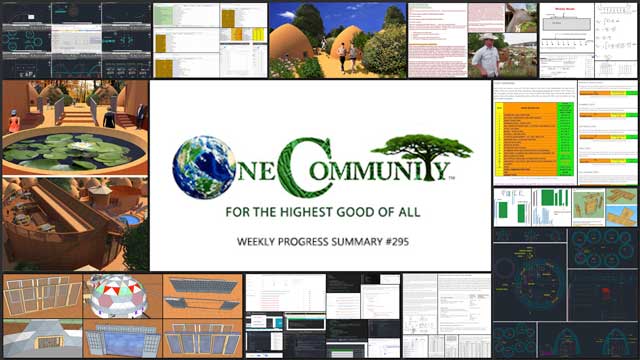
OUR MAIN OPEN SOURCE HUBS
Click on each icon to be taken to the corresponding Highest Good hub page.
One Community’s physical location will forward this movement as the first of many self-replicating teacher/demonstration communities, villages, and cities to be built around the world. This is the November 18, 2018 edition (#295) of our weekly progress update detailing our team’s development and accomplishments:
No-Waste Living
One Community Progress Update #295
Here is the bullet-point list of this last week’s design and progress discussed in detail in the video above:
NO-WASTE LIVING INTRO: @0:34
NO-WASTE LIVING – HIGHEST GOOD HOUSING: @8:06
- Hemanth Kotaru completed his 26th week helping with the structural engineering research and calculations for the Earthbag Village (see below)
- Anvita Kumari Pandey resumed her work on the Earthbag Village Materials and Costs (see below)
- Guy Grossfeld continued with render corrections and PhotoShop additions for the Earthbag Village (see below)
- Dan Alleck finished an Earthbag Village render showing a perspective from inside the village (see below)
- Shadi Kennedy completed his 30th week leading the development of the Murphy bed instructions (see below)
- Dean Scholz finished theEarthbag Village 6-dome layouts (see below)
NO-WASTE LIVING – DUPLICABLE CITY CENTER: @10:23
- Continued working on the Sketchup Duplicable City Center updates for the Dining Dome (see below)
- Continued developing the Duplicable City Center Sprinkler and Emergency Systems Design page (see below)
- Continued developing the Duplicable City Center Materials and Costs, adding all the cost analysis overview imagery and text and the first details image (see below)
NO-WASTE LIVING – HIGHEST GOOD FOOD: @11:28
- Continued writing the behind-the-scenes narrative and detailed food rollout plan for the various stages of development (see below)
NO-WASTE LIVING – HIGHEST GOOD EDUCATION: @12:06
- With over 8 years of development invested in the Education for Life component, this part of One Community is now complete enough to no longer focus and report on it with weekly updates. That is, of course, until we move onto the property and continue the development and open sourcing process with teachers and students. Visit the Education section below for links to all the completed elements of this component and details on the final remaining action items for this area of One Community before moving onto the property and fully launching it.
NO-WASTE LIVING – HIGHEST GOOD SOCIETY: @13:12
- Emilio Nájera continued with his 6th week helping the marketing team (see below)
- Highest Good Network software team consisting of Shubhra Mittal, Aishwarya Singh, Farhan Zaki, Jordan Miller, and Tyler Calvert continued developing the software (see below)
NO-WASTE LIVING SUMMARY: @14:35
-
-
- How you can most help us right now and how anyone can help
-
CLICK HERE IF YOU’D LIKE TO RECEIVE AN EMAIL EACH WEEK WHEN WE RELEASE A NEW UPDATE
YOU CAN ALSO JOIN US THROUGH SOCIAL MEDIA
ONE COMMUNITY WEEKLY UPDATE DETAILS
NO-WASTE LIVING – HIGHEST GOOD HOUSING PROGRESS
 One Community is helping develop no-waste living through Highest Good housing that is artistic and beautiful, more affordable, more space efficient, lasts longer, DIY buildable, and constructed with healthy and sustainable materials:
One Community is helping develop no-waste living through Highest Good housing that is artistic and beautiful, more affordable, more space efficient, lasts longer, DIY buildable, and constructed with healthy and sustainable materials:
-
-
- Learn about: Our Upcoming Crowdfunding Campaign
- Learn about the different village models: 7 Sustainable Village Models
- Visit the open source portals for the first two: Earthbag Village OS Hub | Straw Bale Village OS Hub
-
Hemanth Kotaru (Structural Engineer) completed his 26th week helping with the structural engineering research and calculations for the Earthbag Village (Pod 1). This week’s focus was replacing the soil mix with soil mix springs around the nails to factor in the resistance of the soil mix to the movement of the nail within the bag. The Winkler model is what is being used to calculate the stiffness of these “soil springs” within the bags. You can see some of this work-in-progress here.
Anvita Kumari Pandey (Civil Engineer) also completed her 24th week volunteering. Resuming her work on the Earthbag Village Materials and Costs, this week she continued work on the 3-dome cost analysis, cross checked the material lists and quantities, added missing materials, started on the Vermiculture Toilet cost analysis, and updated the complete village AutoCAD with new internal and external dimensions drawings. You can see some of this work here.
Guy Grossfeld (Graphic Designer) also continued his work helping with render corrections and PhotoShop additions for the Earthbag Village (Pod 1). This week Guy completed these two 1st-generation views of the top of the Tropical Atrium and looking South from the Tropical Atrium entryway, focusing on no-waste living.
Dan Alleck (Designer and Illustrator) completed his 29th week helping with render additions. This week he finished this Earthbag Village (Pod 1) render showing a perspective from inside the village. This image is also now on the website.
Shadi Kennedy (Artist and Graphic Designer) also completed his 30th week leading the development of the Murphy bed instructions. This week he completed a properly scaled parts Illustrator file and continued to simplify the existing parts labeling and cutting system, aimed at no-waste living. You can see some of this work here.
Dean Scholz (Architectural Designer) also continued working on the Earthbag Village (Pod 1). Here is weekly update #138 from Dean, his focus this week was finishing the 6-dome layouts, adding more section view details, and additional labeling of components. You can see some of this work here.
NO-WASTE LIVING – DUPLICABLE CITY CENTER PROGRESS
 One Community is helping develop no-waste living through a Duplicable and Sustainable City Center that is LEED Platinum certified/Sustainable, can feed 200 people at a time, provide laundry for over 300 people, is beautiful, spacious, and saves resources, money, and space:
One Community is helping develop no-waste living through a Duplicable and Sustainable City Center that is LEED Platinum certified/Sustainable, can feed 200 people at a time, provide laundry for over 300 people, is beautiful, spacious, and saves resources, money, and space:
-
-
- Learn about this building and it’s function: Duplicable City Center Open Source Hub
-
This week, the core team continued working on the Sketchup Duplicable City Center updates for the Dining Dome. We added three extra small windows and designed a couple of different utility doors, corrected the size of the sliding doors and door openings in the dome structure, and designed new double sliding doors. You can see some of this work here.
The core team also continued developing the Duplicable City Center Sprinkler and Emergency Systems Design page. This week we finished the sections covering Sprinkler Head and Pipe Selection, Sprinkler Head Location and Number, and System Demand, with our goal of no-waste living in mind. You can see most of this work here.
And the core team continued developing the Duplicable City Center Materials and Costs. This week we added all the cost analysis overview imagery and text and the first details image. You can see some of this work here.
NO-WASTE LIVING – HIGHEST GOOD FOOD PROGRESS
 One Community is helping develop no-waste living through Highest Good food that is more diverse, more nutritious, locally grown and sustainable, and part of our open source botanical garden model to support and share bio-diversity:
One Community is helping develop no-waste living through Highest Good food that is more diverse, more nutritious, locally grown and sustainable, and part of our open source botanical garden model to support and share bio-diversity:
-
-
- Learn about the structures: Hoop House Hub | Aquapini & Walipini Open Source Hub
- See what we’ll be growing: Gardens & Hoop Houses | Large-scale Structures | Food Forest | TA
-
This week the core team continued writing the behind-the-scenes narrative and detailed food rollout plan for the various stages of development. This week we completed (for now) working on chicken coops and began working on goats. We began by reviewing and editing our current goat page, and then began researching additional information. You can see some of this behind-the-scenes work here.
NO-WASTE LIVING – HIGHEST GOOD EDUCATION PROGRESS
 One Community is building the foundations for how humanity creates a sustainable world through Highest Good education that is for all ages, applicable in any environment, adaptable to individual needs, far exceeds traditional education standards, and more fun for both the teachers and the students. This component of One Community is about 95% complete with only the Open Source School Licensing and Ultimate Classroom construction and assembly details remaining to be finished. We’ll report on the final two elements to be finished as we develop them.
One Community is building the foundations for how humanity creates a sustainable world through Highest Good education that is for all ages, applicable in any environment, adaptable to individual needs, far exceeds traditional education standards, and more fun for both the teachers and the students. This component of One Community is about 95% complete with only the Open Source School Licensing and Ultimate Classroom construction and assembly details remaining to be finished. We’ll report on the final two elements to be finished as we develop them.
With over 8 years of work invested in the process, the sections below are all complete until we move onto the property and continue the development and open sourcing process with teachers and students – a development process that is built directly into the structure of the education program and everything else we’re creating too:
- Program Overview: Education Open Source Hub
- How the components work together: How to use the Education for Life Program
- Lesson Plans for Life – Lesson Plans How-to
- Foundations of Outstanding Leaders, Teachers, and Communicators
- Curriculum for Life
- Teaching Strategies for Life
- Learning Tools and Toys for Life
- Evaluation and Evolution
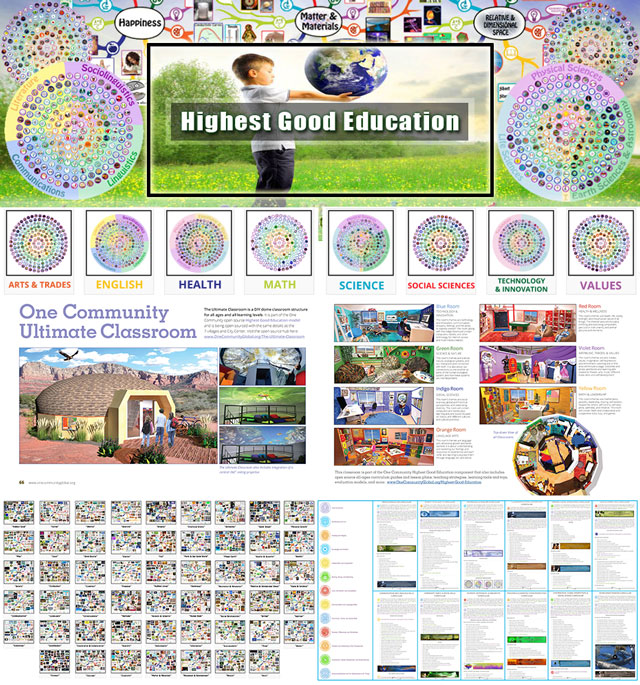
Highest Good Education: All Subjects | All Learning Levels | Any Age – Click image for open source hub
NO-WASTE LIVING – HIGHEST GOOD SOCIETY PROGRESS
 One Community is helping develop no-waste living through a Highest Good society approach to living that is founded on fulfilled living, the study of meeting human needs, Community, and making a difference in the world:
One Community is helping develop no-waste living through a Highest Good society approach to living that is founded on fulfilled living, the study of meeting human needs, Community, and making a difference in the world:
-
-
- Read the Highest Good society overview: Highest Good Society
- Learn about the model for fulfilled living and sharing: A Day in the Life
- Learn about the 4 economic models: RBE | For-profit | Non-profit | Entrepreneurship
- Learn about our open source community collaboration and management software: The Highest Good Network
-
This week Emilio Nájera (Digital Marketer) continued with his 6th week as part of the marketing team. This week he created a pre-marketing analysis of past efforts and researched keywords for several of our top-level branding pages including Highest Good, Fulfilled Living, Community, and Highest Good Society. You can see some of this work here.
In addition to this, the Highest Good Network software team consisting of Shubhra Mittal (Software Delivery Manager), Aishwarya Singh (Computer Science Engineer), Farhan Zaki (Software Engineer), Jordan Miller (Web Developer), and Tyler Calvert (Full-stack Software Engineer) continued developing the software. This week the team:
- Completed all the UI test cases for login page using Selenium.
- Integrated test cases with Sauce Labs.
- Configured nightly jobs on CircleCi to run automated tests
- Got the new header to display a profile picture and added the current user name on a toggle button
- Started creating the Timelog page in React
- Worked on getting data from the API on the timelog page
- Rebuilt the header for the timelog page using Reactstrap
You can see some of this work here:
AND WE PRODUCED THIS WEEKLY UPDATES BLOG – CLICK HERE TO SUBSCRIBE
FOLLOW ONE COMMUNITY’S PROGRESS (click icons for our pages)
INVESTOR PAGES
GET INVOLVED
CONSULTANTS ● WAYS ANYONE CAN HELP ● MEMBERSHIP
CLICK HERE FOR ALL PAST UPDATES
WHAT ONE COMMUNITY IS CREATING
One Community is creating a place to grow together and change the world together. We are creating a space that helps each other live in integrity with each other and the planet as we strive to be the greatest versions of ourselves. We do this by harmoniously respecting each other, nature, and the rest of our one shared planet, promoting no-waste living.
Our goal is to demonstrate what we feel is the most sustainable, healthy, and fun environment we can create. A place based on compassion, kindness, and collaboration. This replicable community will serve as an example for what is possible.
Throughout our design process we are open sourcing and free-sharing everything needed for construction and replication. This includes what we call “Highest Good” approaches to food, energy, housing, education, for-profit and non-profit economics design, social architecture, fulfilled living, stewardship practices and more, all aimed at no-waste living. We are creating these resources for implementation as individual components or complete developments called teacher/demonstration hubs. These hubs will help launch additional hubs as awareness and knowledge grow.
BUILDING THE FIRST OF MANY
One Community will be the first teacher/demonstration hub. It will function as an experiential-learning model that facilitates mass participation to address humanity’s most pressing challenges through: A replicable model for expansion, building seven self-sufficient village/city prototypes, becoming the world leader in open-source sustainability solutions, and evolving and expanding ALL aspects of sustainable living, emphasizing no-waste living.
WHY ONE COMMUNITY IS CREATING THIS
The One Community self-replicating model is capable of creating a sustainable planet within 30 years. We will achieve this by establishing successful teacher/demonstration hubs on every continent. Villages include designs appropriate for each of the five main types of climates, focused on no-waste living. They also include options for even the most challenged economies. These hubs will collaborate with one another, share ideas, resources, and work together as a network to heal the planet. They will also transform the global lifestyle to a more enjoyable, fulfilling, healthy, and sustainable one.
The specifics of how One Community is accomplishing this can be found on the One Community Solution Model to Create Solution-creating Models Page. Research supporting and showing the benefits of a model like this can be found on our Research and Resources Articles Archive.
Even if we don’t achieve our ultimate goal of global transformation, a self-replicating teacher/demonstration model like this will take a relatively short period of time to positively affect millions while inspiring millions more. For One Community residents (the Pioneer Team), the idea of creating and sharing the social and recreational experience with visitors is also fun, exciting, fulfilling, and an additional reason why we are creating this, always promoting no-waste living.
INSPIRING SUSTAINABILITY WITH OPEN SOURCE
One Community’s four-phase strategy for the creation of solution models that create solution creating models uses open source blueprints for duplication that simultaneously address all aspects of the human experience (food, energy, housing, education, social inequality and injustice, fulfilled living, etc.). We see these areas as interdependent and requiring a comprehensive solution if humanity is to move ecologically, socially, economically, and permanently towards a truly sustainable future for everyone.
 One Community
One Community


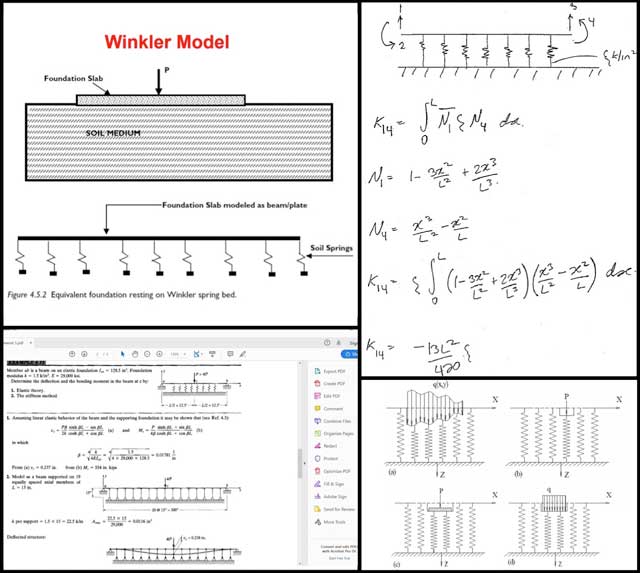
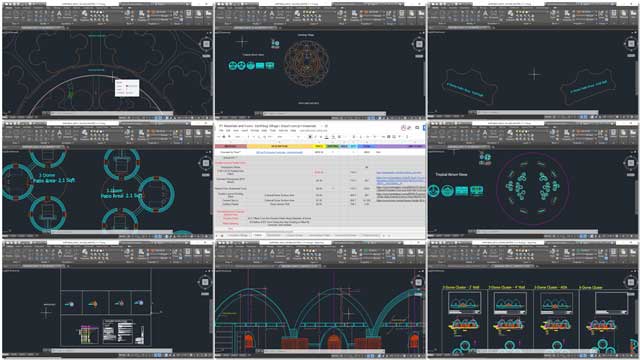
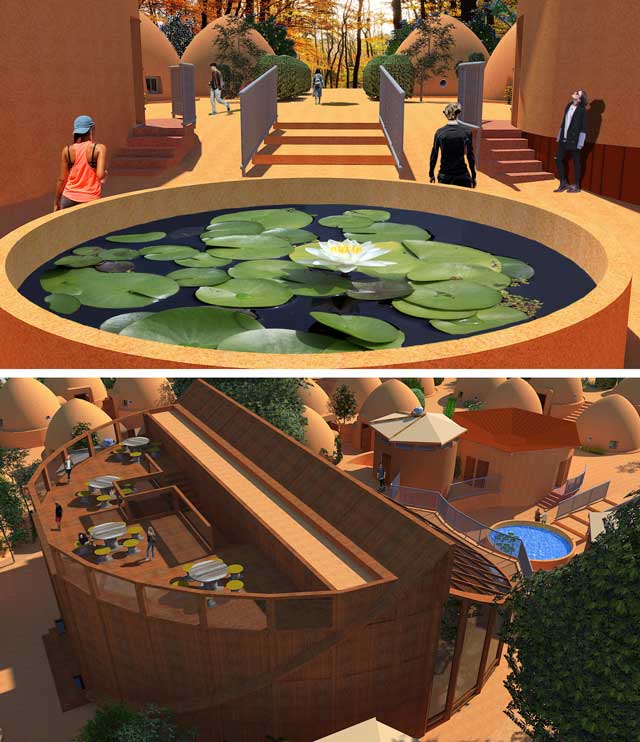
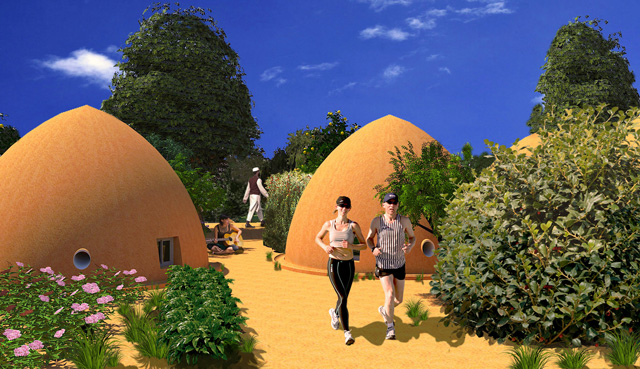


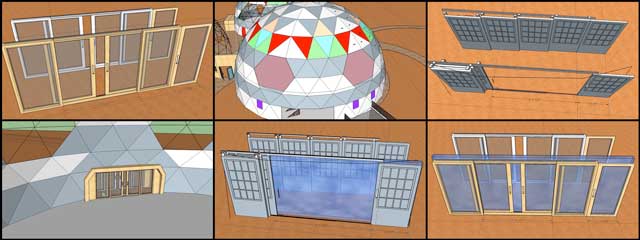
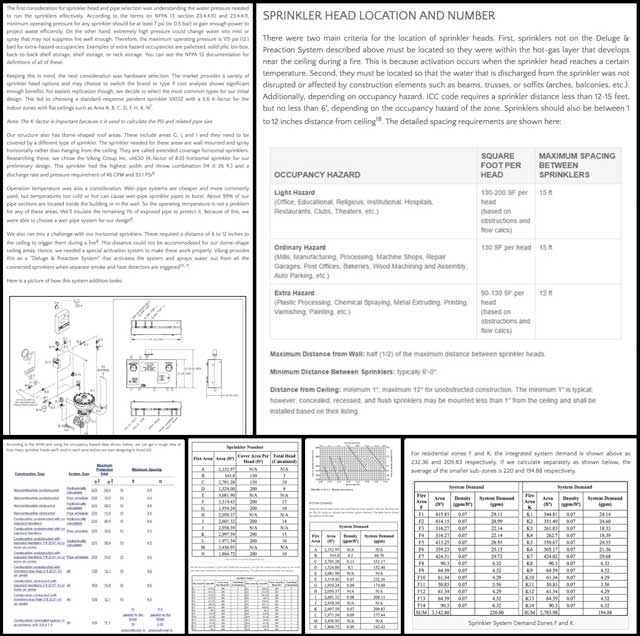
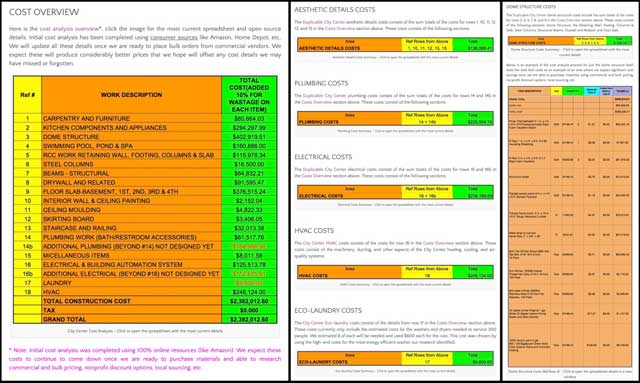
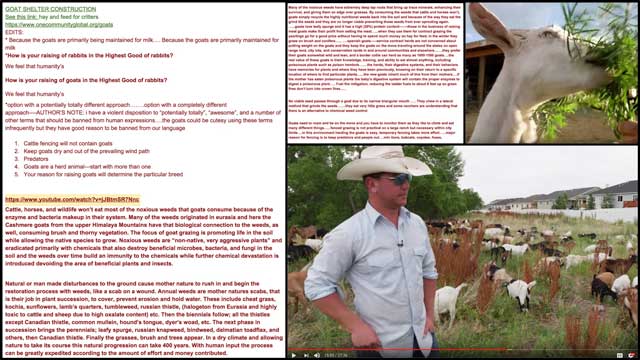
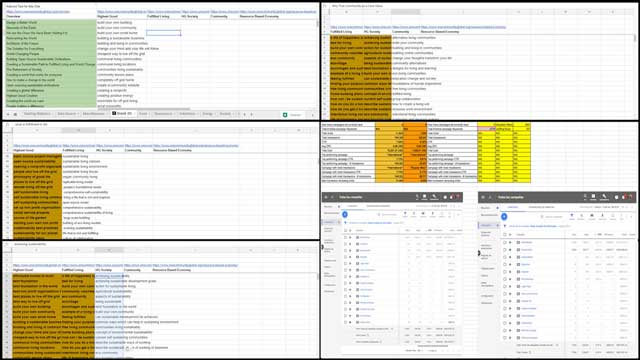
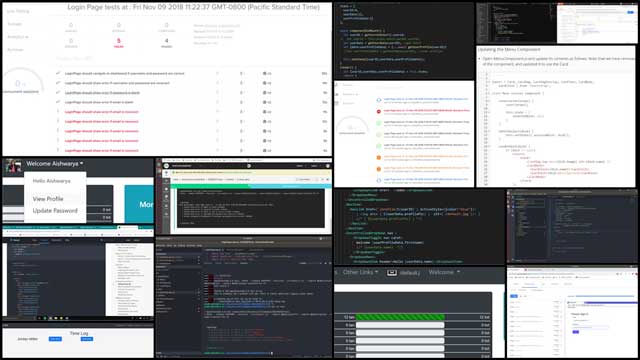



Connect with One Community